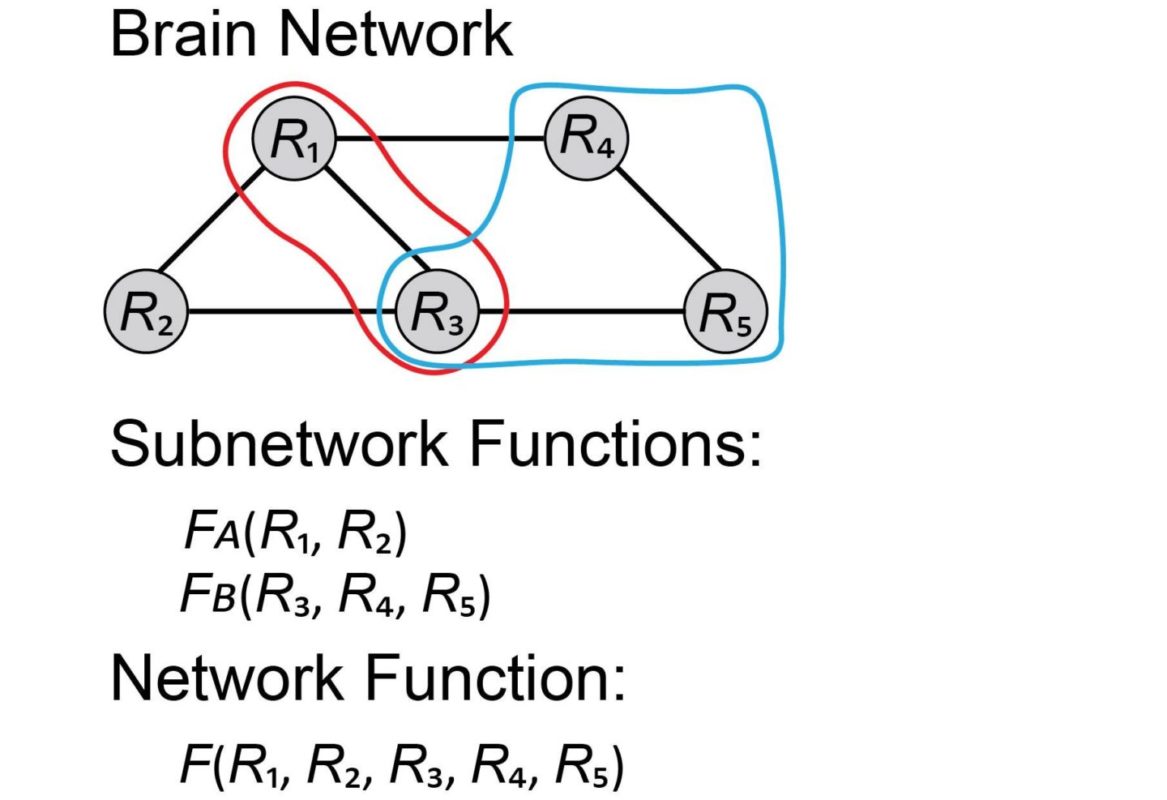But there’s a scenario where things get more interesting with emergence. Let’s consider here the possibility that in some (or possibly many) cases regions do not carry out well defined functions. Instead, two or more regions working together instantiate the basic function of interest, such that its implementation is distributed across regions. If this sounds esoteric, it needn’t be. For example, in ever-so-popular artificial neural networks, undifferentiated units are jointly trained to perform a function of interest, so the functions that the network implements are distributed.
Most of this work is computational in nature but makes close contact with experimental data, as in the example of persistent activity above. For example, van Vugt et al. (2018) studied visual awareness in monkeys by presenting near-threshold objects. Visual stimuli detected by the animals were associated with strong sustained activity in the frontal cortex, but was weaker and quickly decayed for undetected stimuli. The experimental data were well explained by a simple computational model that considered both feedforward and feedback connections between visual areas and prefrontal cortex. Critically, the model displayed dynamics that could not be localized to any one node—it was network property.
More generally, given limitations in recording techniques, stronger evidence that complex dynamics is observed in the brain is relatively limited to examples like central pattern generators, or those involving sub-populations of cells in a specific brain region. Nevertheless, a small but growing body of work supports the notion of distributed dynamics in the brain.
Some researchers, myself included, have suggested that such reductive reasoning— though prevalent in science—will fare poorly in the long run. Our contention is then that in many cases network properties are not reducible to component interactions of welldefined subfunctions—there is no catalog of functional atoms that, together, give rise to behavioral capabilities and mental states of interest. If that’s the case, neuroscientists should embrace distributed processing more strongly.
Brain regions might carry out well-defined functions— edge detection in primary visual cortex, “error monitoring” in the anterior cingulate cortex, and so on. But regions don’t function alone, so when they combine in functional circuits or networks, the behavior of the circuit/network might lead to emergent behaviors, as discussed in the previous post (Emergence in the Brain, Part I).
Hart and Huk (2020) show that multiarea functions are exemplified by reciprocal dynamics between the frontal eye fields (in frontal cortex) and the lateral intraparietal area (in parietal cortex) in macaques, which support persistent activity—also called working memory—during a delayed oculomotor task. Based, among others, on the tight link between these areas at the trial level, the authors suggested that the two areas be viewed as a “single functional unit”. That is to say, persistent activity is a property that is attributable to the joint dynamics of the two regions—we can’t split the functions in half, so to speak.
To reiterate, in the Type II networks discussed here, the key property is that brain regions do not carry out well-defined functions alone. If this holds and can be shown more generally in the brain, it would go against a central notion in neuroscience—the localizability of brain function—and would violate the principle of near-decomposability (discussed in Part I).

Of course, brain regions are not exactly the same, but the idea is that functions of interest would be a property of coalitions of brain regions working together—what I call Type II networks. Are there examples of this type of situation in the brain?
But let’s consider a final issue, one, in fact, that favors near-decomposability: the granularity of function. Above we discussed how “persistent motor activity” was interpreted in terms of a distributed functional unit (involving both the frontal and parietal cortex). But it could be argued that at some more advanced scientific stage “persistent motor activity” could be understood in terms of primitives that are, in fact, carried out in individual brain regions. Were that to be the case, we would revert back to the situation of having networks with nodes that compute well-defined functions (Type I networks). Said a different way, a skeptic could argue that brain regions always compute welldefined functions; the appearance otherwise is just a reflection of our temporary state of ignorance.


